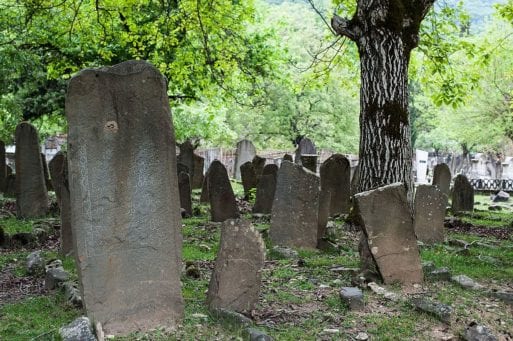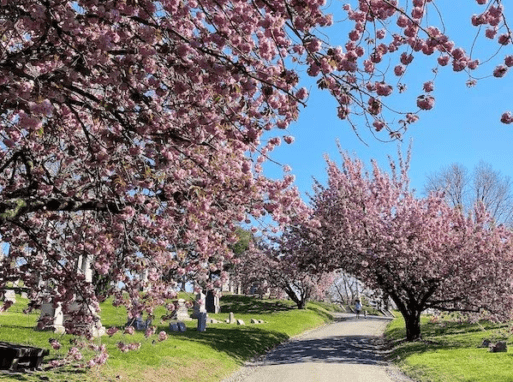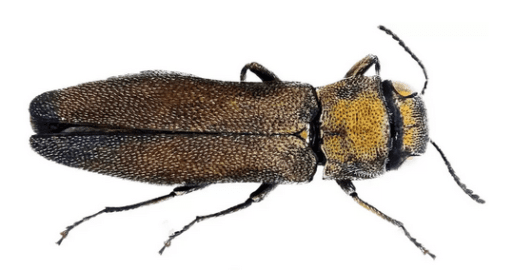
An ancient Chinese graveyard nourishes biodiversity.
Credit: Araz Zeyniyev, via Wikimedia Commons
Graveyards have long provided a place to keep, honor and mourn the dead. Yet they also serve a secondary purpose: supporting biodiversity. A recent study of 199 graveyards in the agricultural landscape of northern China, published in the journal Nature, found a total of 81 plant species in graveyards compared to 34 in nearby wheat fields, and concluded that “even small graveyards show a strong potential for conserving plant richness.”
“These graveyards are left to their own devices most of the time,” co-author Jan Axmarcher, a conservation biologist at the University College London, told Scientific American. “We were impressed by the uniqueness and diversity of plants.”
Surveys elsewhere have also found graveyards to be supportive of biodiversity. A review of 97 studies of cemeteries and churchyards on five continents, published in Global Ecology and Conservation in 2019, found that they “have a considerable conservation role, as even in heavily transformed landscapes they often act as refuges for the populations of rare and endangered species.” The studies described the manner in which graveyards had provided protection for birds, lichens, mosses, rare mushrooms, endangered plant species and old trees. Altogether, the papers identified a total of 140 protected species at these sites.

Flowering trees at Green-Wood Cemetery in New York
Credit: green-wood.com
Finding New Life Amid the Dead
On occasion, graveyards’ biodiversity has even led to new species being unearthed. In Green-Wood Cemetery in Brooklyn, New York, researchers discovered a tiny, glistening wood-boring beetle in a European beech tree. “We never expected to find something new to science,” Marc DiGirolomo, the biological technician at the U.S. Forest Service who discovered the beetle as part of a U.S. Department of Agriculture study, told National Geographic.

The new species of Agrilus, a wood-boring insect, discovered at Green-Wood
Credit: green-wood.com
Green-Wood, which has more than 7,000 trees and is now an official arboretum, has long served as a destination for tourists and locals seeking nature in the city. “At the turn of the century, a lot of these cemeteries were the places for the introduction of new tree species to North America,” Joe Charap, director of horticulture at Green-Wood, said in the National Geographic article. At the time, cemeteries such as Green-Wood served the role of today’s public parks.
Supporting Conservation Through Burial
One researcher at the University of Queensland in Australia, mathematician Michael Holden, has proposed to extend the natural tendency of graveyards to support biodiversity still further through “conservation burials.” Under the scheme, revenue from human burials could be channeled into nature reserves and parks that protect species under threat, he said in 2017.
“Cemeteries could do more than prevent environmental damage caused by traditional burials which use embalming chemicals such as formaldehyde and non-biodegradable materials,” he said. “In the U.S. alone, 2.7 million people die each year, with an estimated funeral revenue of US$19 billion — far more than the estimated $3–$5 billion required to protect every threatened species listed by the international Union for the Conservation of Nature.”

 Graveyards Are Sanctuaries of Biodiversity
Graveyards Are Sanctuaries of Biodiversity




 Composting Bodies Is Now Legal in a Dozen States
Composting Bodies Is Now Legal in a Dozen States














